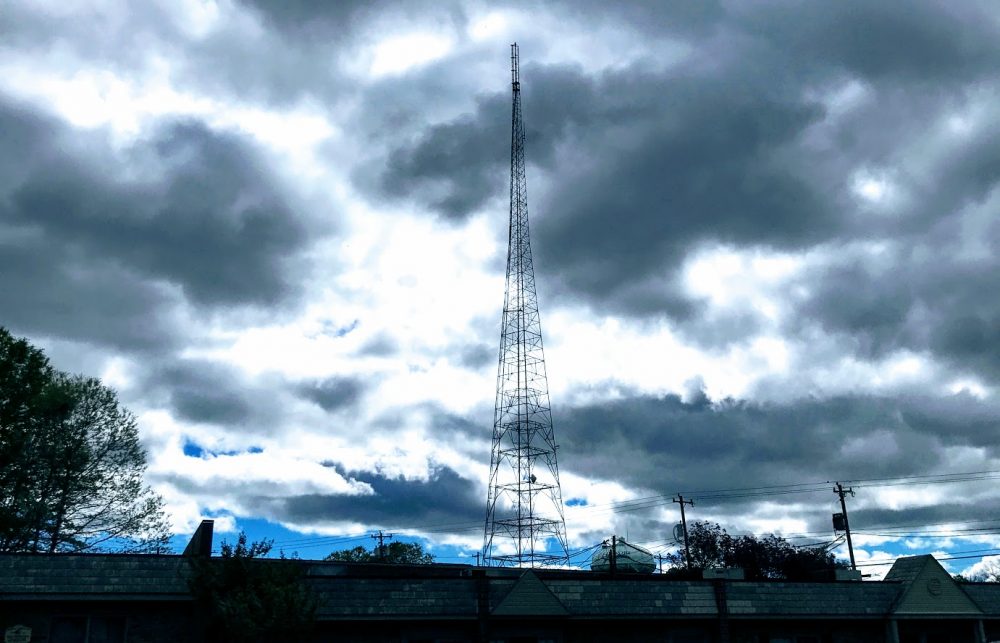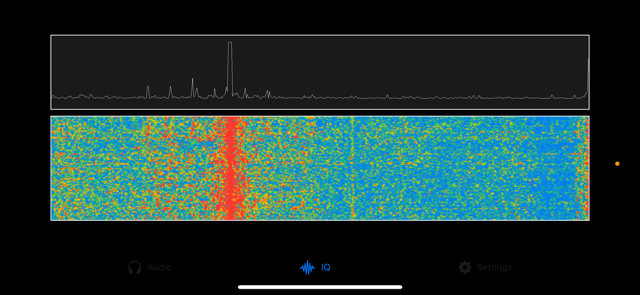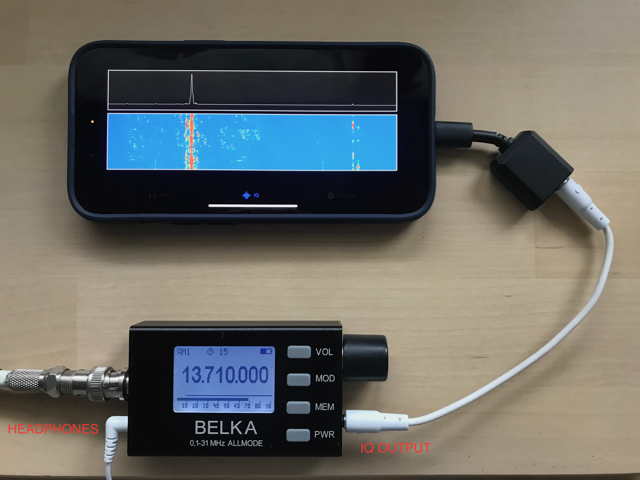Radio Waves: Stories Making Waves in the World of Radio
Welcome to the SWLing Post’s Radio Waves, a collection of links to interesting stories making waves in the world of radio. Enjoy!
Many thanks to SWLing Post contributors Stefano Rampazzo, David Iurescia, and Paul for the following tips:
SWLtools App for the Belka receiver
Many thanks to SWLing Post contributor, Stefano, who writes:
I am a proud owner of a Belka receiver and I really love it.
The Belka is small, it is simple, it works very well outdoors with its short antenna that outperforms my desktop receivers with long wire antennas
Its size allows you to put it in your pocket, take it on a trip, on vacation, anywhere.
I have often sat in my garden at night with my Belka, away from the electrical noise of the house, and made some really good listening. In these situations I realized that I needed to record my dx. I thought about buying a mini-recorder, but since I always have my iPhone with me I decided to develop an app to record the audio of my Belka. After some time I am happy to let you know that my new app SWLtools is available on the Apple AppStore.
SWLtools allows you to record, play back and share your best listening. Also, since Belka also has an additional output where the IQ signal is present, I also added a function to the app to display the spectrum and spectrogram (waterfall).
As you know, modern smartphones do not have analog inputs and outputs, so to use SWLtools it is mandatory to have a USB audio device.
I bought a cheap USB dongle with a line input and output. Its sampling rate is 44.1 kHz, it is very low, but it is enough for minimal viewing.
SWLtools is available for free on the Apple AppStore (and it is also ad-free).
DAB+ receivers to be woken up in crisis situations (World DAB)
From next year, new DAB+ receivers will have better audio and text alerts in crisis situations. The current standard for alerts is called AAS (Alarm Annoucement Switching) and was introduced in 2020. In a crisis situation, receivers will switch to the station responsible for crisis information and the screen will also provide short text information. DAB+ also allows for the creation of temporary radio channels in crisis situations, which was used during the Brisbane floods in 2011. Over the past two years, the new Automatic Safety Alert (ASA) standard has been developed by WorldDAB and Digitalradio Deutschland in co-operation with chip manufacturer Frontier Smart Technologies and electronics manufacturers such as Technisat and JVC Kenwood. Among other things, receivers with ASA can be switched on automatically in emergency situations.
Click here to check out this note and more at World DAB.
Rti to launch Arabic podcasts on September 30 (RTI)
On Wednesday, Radio Taiwan International announced that it will launch its new Arabic podcasts on International Podcast Day on September 30 at the 2024 Rti Arabic Day Forum.
Rti’s president Chang Jui-Chang (???), speaking at the event titled “Rti Arabic Day: Taiwan Steps into the Arab World – Taiwan-Arab Cultural Exchange Forum,” remarked on the historical context of Rti’s Arabic programming, which began in 1950 but was halted in 2005 due to budget constraints. It was only on Eid al-Fitr in May 2021 that Rti re-initiated its outreach to Arab audiences through social media, achieving significant success over the past three years.
The forum featured several experts, including Representative Mr. Adel Fahad Althaidi of the Saudi Arabian Trade Office in Taipei, Scholar Ouyang Wen-chin (????), Assistant Professor Tsung Pei-chen (???), Lecturer Fu Yi-hsuang (???) from National Chengchi University’s Arabic Department, and former Associate Professor Hsu Cheng-hsiang (???). Fu highlighted that Taiwanese cinema serves as a window for the Arab world to understand Taiwan, noting the frequent cultural festivals, such as film, music, and dance festivals hosted abroad by the Ministry of Foreign Affairs to promote cultural exchange. [Continue reading…]
Rearchiving 2 million hours of digital radio, a comprehensive process (National Library – Norway)
The National Library is in the process of a major overhaul of its 2007 bit-repository, replacing it with a contemporary digital preservation system. This new solution is based on an in-house developed system called DPS (Digital Preservation Services), which uses IBM-HPSS as the underlying bit repository for data storage. This transition, which is expected to span over a couple of years, is necessary to ensure the long-term preservation and accessibility of the National Library’s digital collection.
Transition to a New Preservation Solution
In 2023, all new data archiving was transferred to the new DPS preservation solution. At this time, the old bit repository contained over 14 Petabytes of digitized and legally deposited historical material, which needs to be re-archived into DPS. A key part of this process involves analyzing and repackaging the historical data to meet the new DPS requirements.
Historical Legally Deposited Radio
Among the materials to be re-archived are 2.2 million hours of digital radio, equivalent to 2.5 million files and a total of 1 Petabyte of data. This includes both born-digital and digitized radio programs from the period 1993-2022.
In 1993, there were four radio channels delivering 16,500 hours of radio. By 2022, the number of radio channels had increased to 30, collectively delivering 150,000 hours of radio. With the phasing out of the old bit repository, it became necessary to move this data to the new preservation solution.
DSM to DPS: A Thorough Process
DSM (Digital Longterm Storage) has been the National Library’s internal management system for legally deposited radio for the past 20 years. The data has been stored in an Oracle HSM bit-repository in three instances (disk, tape, tape), and the radio material was fetched daily from various broadcasters. Some radio broadcasts were stored as mp3 and wav files, with accompanying checksum files. Other broadcasts were only stored as mp3. [Continue reading on the National Library blog…]
Do you enjoy the SWLing Post?
Please consider supporting us via Patreon or our Coffee Fund!
Your support makes articles like this one possible. Thank you!







Hi Stefano,
Wonderful app, but unfortunately I use Android…
Is it difficult for you to write an app for Android ?
Or could someone write for all Android users ?
Thanks,
Nelson
That’s an awesome app idea! Plug in your old iPhone and turn it into a panadapter, how cool is that? OK I don’t have an iPhone, still cool tho! :).
It’s interesting that broadcasters and administrators are exploring the emergency applications of digital broadcasting. It seems incredibly vulnerable by comparison with analogue techniques but it is still worth looking at. The UK is closing down analogue transmitters while a different arm of government responsible for emergency preparedness is still promoting wind-up analogue receivers. Is there a wind-up DAB capable RX?
Stu,
Digital Radio Mondiale has had Emergency Warning Functionality in the specification for all transmitter and receivers for 23 years. https://www.drm.org/about-drm/drm-emergency-warning-functionality/
The 2013 – 2017 Indian rollout of DRM https://www.nautel.com/resources/webinars/am-transmitters/building-for-a-billion/ Now there are 6 million cars with DRM fitted by the manufacturer at no extra cost.
DRM1000 receiver https://www.youtube.com/watch?v=Tua6xKalgZ0 This module is suitable for windup due to its very low power consumption. These modules are available for sale along with the demonstrator board.
The standard for DAB+ emergency warnings is yet to be published but thus far does not seem to be compatible with the one in DRM.
I have a question for Stefano about the SWL app and the interface with a Belka. Is the IQ out cable just a simple 3.5mm stereo cable at both ends? For the Iphone adapter, can I just use a USB-C into the charge port and a simple single 3.5mm stereo female to accept the 3.5mm stereo cable from the Belka IQ?
Thanks!
Hi Nick, yes the IQ output on the Belka is a 3.5mm stereo jack so a stereo cable with a 3.5mm male plug is fine, by the way the Belka headphone jack is also stereo and you must use a male stereo plug to connect headphones.
The USB-C audio adapter must have line out and line in.
I am using a cheap Sabrent USB-C audio adapter and it has two 3.5mm jacks (green and red) so to connect the IQ output on the Belka I use a stereo cable with 3.5mm male plugs.
Thanks for creating this app Stefano – I have two Belka’s (2nd & 3rd gen) and now can finally use the I/O option with ultra-portable operation!
Who makes the dongle you are using in the pics?
Hi Sealord,
Thanks a lot.
I am using the first USB-C I found, it is a Sabrent with a sampling rate of 44.1 kHz.
Unfortunately, I have not been able to find a small and cheap USB-C with a higher input sampling rate.
This sampling rate is not that high and this is a limit of the total bandwidth that can be represented, this also does not help much in finding signals.
I am new to SDR programming, so this little app is a starting point to learn more. In the future I would like to add more features like CW decoding or weather fax, we will see.